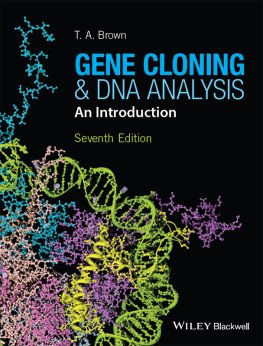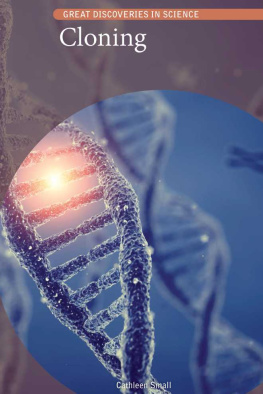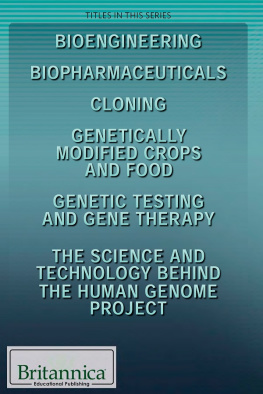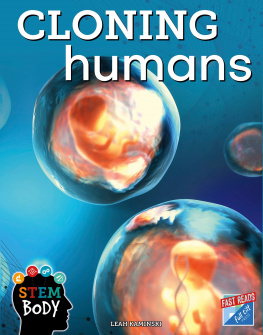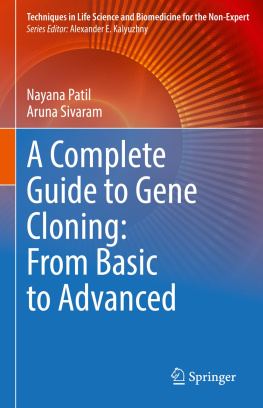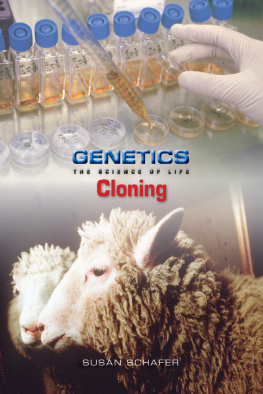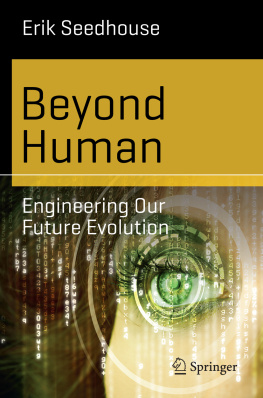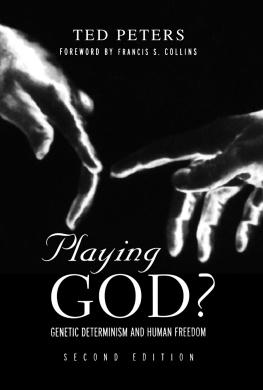Brown - Gene cloning and DNA analysis: an introduction
Here you can read online Brown - Gene cloning and DNA analysis: an introduction full text of the book (entire story) in english for free. Download pdf and epub, get meaning, cover and reviews about this ebook. City: Chichester, year: 2016;2015, publisher: Wiley Blackwell, genre: Children. Description of the work, (preface) as well as reviews are available. Best literature library LitArk.com created for fans of good reading and offers a wide selection of genres:
Romance novel
Science fiction
Adventure
Detective
Science
History
Home and family
Prose
Art
Politics
Computer
Non-fiction
Religion
Business
Children
Humor
Choose a favorite category and find really read worthwhile books. Enjoy immersion in the world of imagination, feel the emotions of the characters or learn something new for yourself, make an fascinating discovery.
- Book:Gene cloning and DNA analysis: an introduction
- Author:
- Publisher:Wiley Blackwell
- Genre:
- Year:2016;2015
- City:Chichester
- Rating:4 / 5
- Favourites:Add to favourites
- Your mark:
- 80
- 1
- 2
- 3
- 4
- 5
Gene cloning and DNA analysis: an introduction: summary, description and annotation
We offer to read an annotation, description, summary or preface (depends on what the author of the book "Gene cloning and DNA analysis: an introduction" wrote himself). If you haven't found the necessary information about the book — write in the comments, we will try to find it.
Brown: author's other books
Who wrote Gene cloning and DNA analysis: an introduction? Find out the surname, the name of the author of the book and a list of all author's works by series.
Gene cloning and DNA analysis: an introduction — read online for free the complete book (whole text) full work
Below is the text of the book, divided by pages. System saving the place of the last page read, allows you to conveniently read the book "Gene cloning and DNA analysis: an introduction" online for free, without having to search again every time where you left off. Put a bookmark, and you can go to the page where you finished reading at any time.
Font size:
Interval:
Bookmark:

T.A. BROWN
University of Manchester
Manchester
Seventh Edition

This edition first published 2016 2016 by John Wiley & Sons, Ltd
Sixth edition published 2010 by John Wiley & Sons, Ltd
Fourth and fifth editions published 2001, 2006 by Blackwell Publishing Ltd
First, second and third editions published 1986, 1990, 1995 by Chapman & Hall
Registered office: John Wiley & Sons Ltd, The Atrium, Southern Gate, Chichester, West Sussex, PO19 8SQ, UK
Editorial offices: 9600 Garsington Road, Oxford, OX4 2DQ, UK
The Atrium, Southern Gate, Chichester, West Sussex, PO19 8SQ, UK
111 River Street, Hoboken, NJ 07030-5774, USA
For details of our global editorial offices, for customer services and for information about how to apply for permission to reuse the copyright material in this book please see our website at www.wiley.com/wiley-blackwell.
The right of the author to be identified as the author of this work has been asserted in accordance with the UK Copyright, Designs and Patents Act 1988.
All rights reserved. No part of this publication may be reproduced, stored in a retrieval system, or transmitted, in any form or by any means, electronic, mechanical, photocopying, recording or otherwise, except as permitted by the UK Copyright, Designs and Patents Act 1988, without the prior permission of the publisher.
Designations used by companies to distinguish their products are often claimed as trademarks. All brand names and product names used in this book are trade names, service marks, trademarks or registered trademarks of their respective owners. The publisher is not associated with any product or vendor mentioned in this book.
Limit of Liability/Disclaimer of Warranty: While the publisher and author(s) have used their best efforts in preparing this book, they make no representations or warranties with respect to the accuracy or completeness of the contents of this book and specifically disclaim any implied warranties of merchantability or fitness for a particular purpose. It is sold on the understanding that the publisher is not engaged in rendering professional services and neither the publisher nor the author shall be liable for damages arising herefrom. If professional advice or other expert assistance is required, the services of a competent professional should be sought.
Library of Congress Cataloging-in-Publication Data
Brown, T.A. (Terence A.), author.
Gene cloning and DNA analysis : an introduction / T.A. Brown. Seventh edition.
p. ; cm.
Includes bibliographical references and index.
ISBN 978-1-119-07257-7 (cloth) ISBN 978-1-119-07256-0 (pbk.)
I. Title.
[DNLM: 1. Cloning, Molecular. 2. DNA, Recombinantanalysis. 3. Sequence Analysis, DNA. QU 450]
QH442.2
572.8633dc23
2015015462
A catalogue record for this book is available from the British Library.
Wiley also publishes its books in a variety of electronic formats. Some content that appears in print may not be available in electronic books.
Anyone who works with DNA is well aware of the dramatic changes that have taken place during the past few years in DNA sequencing methodology. To reflect these advances, in this new edition of Gene Cloning and DNA Analysis: An Introduction I have completely remodelled the chapter on DNA sequencing to give the new next-generation methods equal prominence alongside the traditional approaches to DNA sequencing, and also to modernize the description of the ways in which genome sequences are generated. Elsewhere, I have stressed the importance of RNA-seq as a means of studying transcriptomes, and ChIP-seq for locating protein-binding sites. These changes correct the major weakness of the Sixth Edition, which was written just before these methods came into mainstream use.
Elsewhere, I have made the usual updates, especially in Part III where I have tried to keep pace with the increasingly rapid developments in the applications of gene cloning and DNA analysis in industry, medicine and agriculture. I have also rewritten the last part of the final chapter, on archaeogenetics, in order to present some of the new information on the human past that has been revealed by the Neanderthal and Denisovan genome sequences. As always, my primary aim is to ensure that Gene Cloning remains an introductory text that begins at the beginning and does not assume that the reader has any prior knowledge of the techniques used to study genes and genomes.
For the n-th time I must thank my wife Keri for the unending support that she has given to me in my decision to use up evenings and weekends writing this and other books.
T.A. Brown
University of Manchester
This book is accompanied by a companion website:
www.wiley.com/go/brown/cloning
The website includes:
- Powerpoints of all figures from the book for downloading
- PDFs of tables from the book
The Basic Principles of Gene Cloning and DNA Analysis
Why Gene Cloning and DNA Analysis are Important
In the middle of the 19th century, Gregor Mendel formulated a set of rules to explain the inheritance of biological characteristics. The basic assumption of these rules is that each heritable property of an organism is controlled by a factor, called a gene , that is a physical particle present somewhere in the cell. The rediscovery of Mendel's laws in 1900 marks the birth of genetics , the science aimed at understanding what these genes are and exactly how they work.
For the first 30 years of its life this new science grew at an astonishing rate. The idea that genes reside on chromosomes was proposed by W. Sutton in 1903, and received experimental backing from T.H. Morgan in 1910. Morgan and his colleagues then developed the techniques for gene mapping , and by 1922 had produced a comprehensive analysis of the relative positions of over 2000 genes on the four chromosomes of the fruit fly, Drosophila melanogaster.
Despite the brilliance of these classical genetic studies, there was no real understanding of the molecular nature of the gene until the 1940s. Indeed, it was not until the experiments of Avery, MacLeod, and McCarty in 1944, and of Hershey and Chase in 1952, that anyone believed that deoxyribonucleic acid (DNA) is the genetic material. Up until then it was widely thought that genes were made of protein. The discovery of the role of DNA was a tremendous stimulus to genetic research, and many famous biologists (Delbrck, Chargaff, Crick, and Monod were among the most influential) contributed to the second great age of genetics. During the 14 years between 1952 and 1966, the structure of DNA was elucidated, the genetic code cracked, and the processes of transcription and translation described.
These years of activity and discovery were followed by a lull, a period of anticlimax when it seemed to some molecular biologists (as the new generation of geneticists styled themselves) that there was little of fundamental importance that was not understood. In truth, there was a frustration that the experimental techniques of the late 1960s were not sophisticated enough to allow the gene to be studied in any greater detail.
Next pageFont size:
Interval:
Bookmark:
Similar books «Gene cloning and DNA analysis: an introduction»
Look at similar books to Gene cloning and DNA analysis: an introduction. We have selected literature similar in name and meaning in the hope of providing readers with more options to find new, interesting, not yet read works.
Discussion, reviews of the book Gene cloning and DNA analysis: an introduction and just readers' own opinions. Leave your comments, write what you think about the work, its meaning or the main characters. Specify what exactly you liked and what you didn't like, and why you think so.

